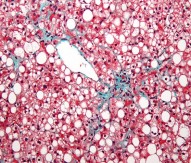
Microbiome bacteria growth rate assessed
A study has suggested a new approach to assessing the impact of different bacteria living in a human’s intestinal tract on their health.
Scientists from the Weizmann Institute, part-funded by the European Research Council, suggest assessing how fast various bacteria grow could provide an indication. According to researchers, the new computational method can illuminate a dynamic process such as growth from a static ‘snapshot’ of a single sample, and thus may have implications for both diagnostics and new avenues of research.
The study began with the advanced genomic sequencing techniques used in many current microbiome studies, which sequence all of the bacterial DNA in a sample. From the short sequences, they constructed a picture of the types of bacteria and their relative abundance, yet the researchers realised that this sequencing technique held another type of information.
Commenting Professor Eran Segal, whose lab the research was partially undertaken, said: “The sample’s bacteria are doing what bacteria do best: making copies of their genomes so they can divide. So most of the bacterial cells contain more than one genome – a genome and a half, for example, or a genome and three quarters.”
As most bacterial strains have pre-programmed ‘start’ and ‘finish’ codes, the team was able to identify the ‘start’ point as the short sequence that was most prevalent in the sample. The least prevalent, at the other end of the genome, was the DNA that gets copied last. The researchers found that analysing the relative amounts of starting DNA and ending DNA could be translated into the growth rate for each strain of bacteria.
The group tested this formulation experimentally, first in single-strain cultures for which the growth rate could be controlled and observed, then in multiple animal model systems, and finally in the DNA sequences of human microbiomes in their full complexity. The method was more successful than anticipated, with the estimated bacterial growth rates turned out to be nearly identical to observed growth rates.
Adding his thoughts, Dr Eran Elinav, whose lab research was also undertaken, remarked: “We can finally say something about how the dynamics of our microbiome are associated with a propensity to disease. Microbial growth rate reveals things about our health that cannot be seen with any other analysis method.”
In their examination of human microbiome (intestinal tract) data, the group found that particular changes in bacterial growth rates are uniquely associated with Type 2 diabetes; others are tied to inflammatory bowel disease. These associations were not observed in the static microbiome ‘population’ studies, thus the method could be used in the future as a diagnostic tool to detect disease or pathogen infection early on, or to determine the effects of probiotic or antibiotic treatment.
The study is report in Science.
European Research Council




